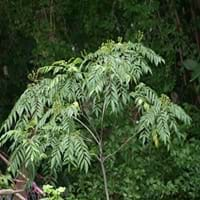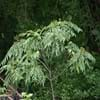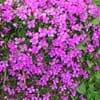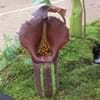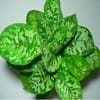Life Span
Perennial
Perennial
Type
Tender Perennial
Perennial
Origin
Southern Europe, Mediterranean, Turkey
California
Types
Not Available
Not Available
Habitat
Hillside, Rocky areas
Chaparral, River side
USDA Hardiness Zone
7-11
7-10
Sunset Zone
H1, H2, 13, 14, 15, 16, 17, 18, 19, 20, 21, 22, 23, 24
H1, 4, 5, 6, 7, 8, 9, 10, 11, 12, 14, 15, 16, 17, 18, 19, 20, 21, 22, 23, 24
Habit
Cushion/Mound-forming
Upright/Erect
Minimum Width
Not Available
Flower Color
Yellow
White, Yellow
Flower Color Modifier
Bicolor
Bicolor
Fruit Color
Sandy Brown
Green, Tan
Leaf Color in Spring
Light Green, Gray Green
Gray Green
Leaf Color in Summer
White, Gray Green, Gray
Gray Green
Leaf Color in Fall
White, Gray Green, Gray
Gray Green
Leaf Color in Winter
Light Green
Light Green
Leaf Shape
Small elliptic
Lance shaped
Plant Season
Summer, Fall
Spring, Summer
Sunlight
Full Sun, Partial Sun
Full Sun
Type of Soil
Loam, Sand
Loam, Sand
The pH of Soil
Neutral, Alkaline
Neutral, Alkaline
Soil Drainage
Well drained
Well drained
Bloom Time
Summer, Late Summer, Early Fall
Early Spring, Spring, Late Spring, Early Summer, Summer
Tolerances
Drought
Drought
Where to Plant?
Container, Ground
Ground
How to Plant?
Seedlings, Stem Planting, Transplanting
Cuttings, Seedlings
Plant Maintenance
Medium
Medium
Watering Requirements
Requires regular watering, Water Deeply, Water more in summer, Water when top layer of soil becomes dry
Needs watering once a week, Water well when planted
In Summer
Lots of watering
Lots of watering
In Spring
Moderate
Moderate
In Winter
Average Water
Average Water
Soil pH
Neutral, Alkaline
Neutral, Alkaline
Soil Type
Loam, Sand
Loam, Sand
Soil Drainage Capacity
Well drained
Well drained
Sun Exposure
Full Sun, Partial Sun
Full Sun
Pruning
Prune if you want to improve plant shape, Prune in early spring, Prune to stimulate growth, Remove damaged leaves, Remove dead branches, Remove dead leaves
prune nearly to the ground in late fall
Fertilizers
organic fertlizers
organic fertlizers
Pests and Diseases
Red blotch
Verticillium Wilt
Plant Tolerance
Drought
Drought
Flower Petal Number
Single
Single
Fragrant Bark/Stem
Yes
No
Showy Foliage
Yes
Not Available
Foliage Texture
Fine
Not Available
Foliage Sheen
Matte
Not Available
Attracts
Insects
Bees, Birds, Butterflies
Allergy
no allergic reactions
no allergic reactions
Aesthetic Uses
Not Used For Aesthetic Purpose
Showy Purposes
Beauty Benefits
Improve hair condition, Improve skin condition
Not Available
Environmental Uses
Air purification
Air purification
Medicinal Uses
Anemia, chest congestion, Improve heart health, Liver problems, Skin irritation
antimicrobial, Astringent, Gum Problems, Stomach pain
Part of Plant Used
Leaves
Flower Stalk
Other Uses
Economic Purpose, Employed in herbal medicine, Used As Food, Used as a spice
Used as Ornamental plant
Used As Indoor Plant
No
No
Used As Outdoor Plant
Yes
Yes
Garden Design
Bedding Plant, Container, Cutflower, Edging, Herb / Vegetable, Mixed Border, Rock Garden / Wall, Topiary / Bonsai / Espalier
Feature Plant, Groundcover, Mixed Border, Wildflower
Botanical Name
HELICHRYSUM italicum
ROMNEYA coulteri
Common Name
Curry Plant, Gold Strawflower
Matilija Poppy
In Hindi
करी संयंत्र
Matilija Poppy
In German
Currykraut
Matilija Poppy
In French
Usine de Curry
Matilija Poppy
In Spanish
planta de Curry
Matilija amapola
In Greek
φυτό Curry
Matilija παπαρούνας
In Portuguese
Curry planta
Matilija Poppy
In Polish
curry roślin
Matilija Poppy
In Latin
Curry plant
Matilija Poppy
Phylum
Magnoliophyta
Magnoliophyta
Class
Magnoliopsida
Magnoliopsida
Order
Asterales
Papaverales
Family
Asteraceae
Papaveraceae
Genus
Helichrysum
Romneya
Clade
Angiosperms, Asterids, Eudicots
Angiosperms, Eudicots
Tribe
Gnaphalieae
Not Available
Subfamily
Asteroideae
Papaveroideae
Importance of Curry Plant and Matilija Poppy
Want to have the most appropriate plant for your garden? You might want to know the importance of Curry Plant and Matilija Poppy. Basically, these two plants vary in many aspects. Compare Curry Plant and Matilija Poppy as they differ in many characteristics such as their life, care, benefits, facts, etc. Every gardener must at least have the slightest clue about the plants he wants to plant in his garden. Compare their benefits, which differ in many ways like facts and uses. The medicinal use of Curry Plant is Anemia, chest congestion, Improve heart health, Liver problems and Skin irritation whereas of Matilija Poppy is antimicrobial, Astringent, Gum Problems and Stomach pain. Curry Plant has beauty benefits as follows: Improve hair condition and Improve skin condition while Matilija Poppy has beauty benefits as follows: Improve hair condition and Improve skin condition.
Compare Facts of Curry Plant vs Matilija Poppy
How to choose the best garden plant for your garden depending upon its facts? Here garden plant comparison will help you to solve this query. Compare the facts of Curry Plant vs Matilija Poppy and know which one to choose. As garden plants have benefits and other uses, allergy is also a major drawback of plants for some people. Allergic reactions of Curry Plant are no allergic reactions whereas of Matilija Poppy have no allergic reactions respectively. Having a fruit bearing plant in your garden can be a plus point of your garden. Curry Plant has no showy fruits and Matilija Poppy has no showy fruits. Also Curry Plant is not flowering and Matilija Poppy is not flowering . You can compare Curry Plant and Matilija Poppy facts and facts of other plants too.
